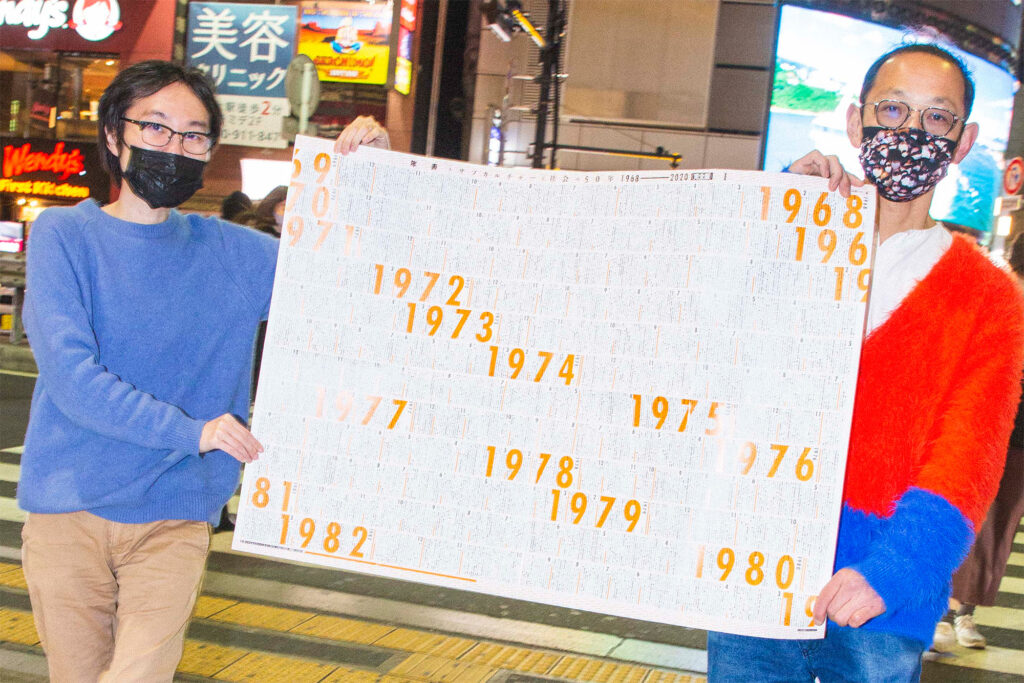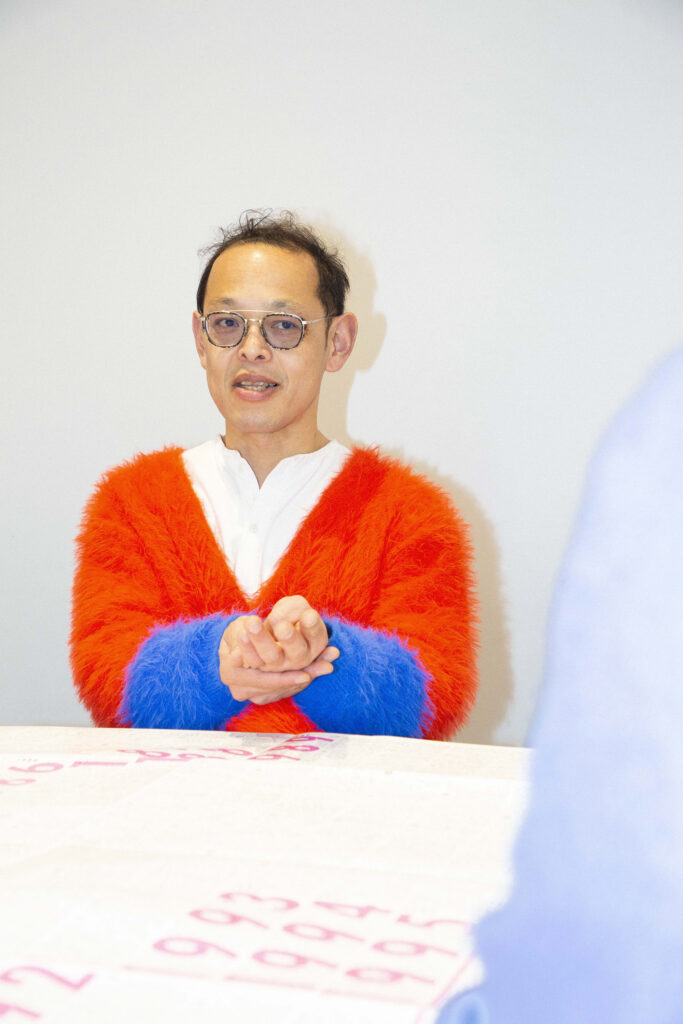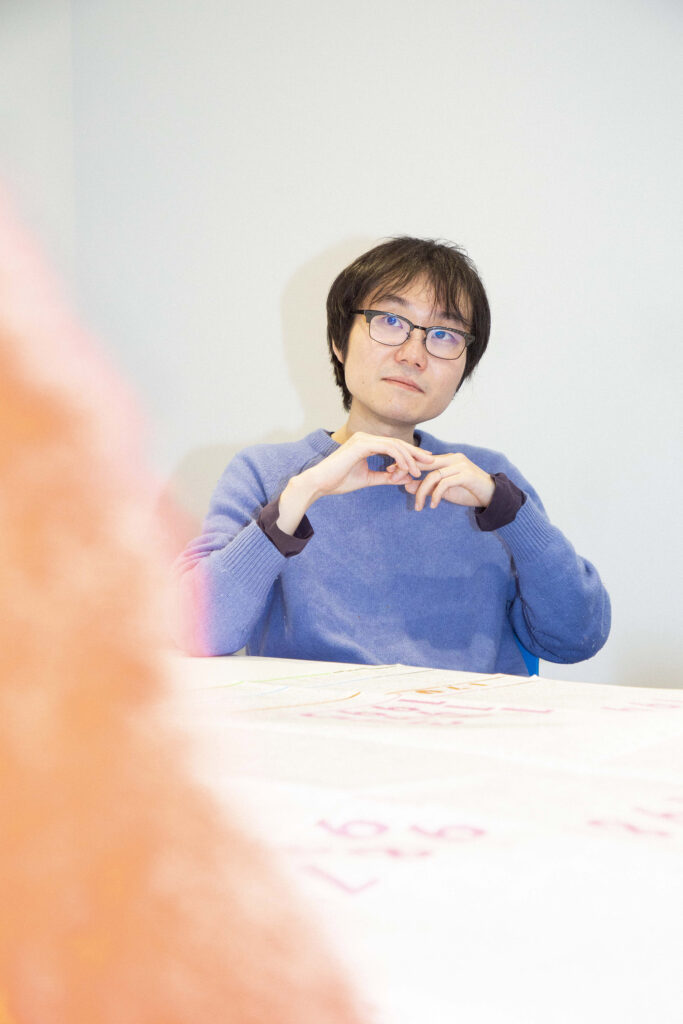The chronological table begins on January 5th, 1968 with “The inauguration of Alexander Dubček as the First Secretary of the Presidium of the Central Committee of the Communist Party of Czechoslovakia ” and ends on December 28th, 2020 with “The theatrical version of ‘Demon Slayer’ becomes the highest-grossing film of all time in Japan.” The book, A Chronological Table: 50 Years of Subcultures and Society 1968 – 2020 (Unabridged edition) (2021, Millions Years Bookstore), is an incredible labor of love. It describes the various events and topics of those 50-odd years, spanning subcultures such as music, film, and anime, as well as political economy and social customs——all crammed onto four B1-size pages. Panth, a writer and critic who is also part of the text unit TVOD, compiled this chronology, which boasts an amount of information so overwhelming that it’s dizzying. Shuichi Kitao is the founder of the publisher Million Years Bookstore and coincidentally played a role in the rise of subcultures in his former gig as the editor-in-chief of Quick Japan. TOKION asked the two about how they started the chronological tables, the intimate connection between subcultures and society, and the post-subculture scene.
The incredible, painstaking work compiled by the “Panth the chronology monster”
――A Chronological Table: 50 Years of Subcultures and Society 1968 – 2020 (Unabridged edition)(hereinafter A Chronological Table (Unabridged edition)) was published this past January, but part of it was also included at the end of the book, Post-Subculture Yakeatoha (2020, Million Years Bookstore) by TVOD, a text unit comprised of you [Panth] and Komeka. At that point, was the chronological table already in its current state?
Panth: There are parts that I added or adjusted after, but it was close to A Chronological Table (Unabridged edition). However, the table was so vast that it wouldn’t fit in the book, so at the time, I had to reluctantly cut it down and edit it.
Shuichi Kitao: It ended up being 1/10 or 1/20th of the original version, so I wouldn’t exactly call it “cutting it down.” (laughs) I was told the version in the supplement at the end of Post-Subculture Yakeatoha was dense, but for those of us who had seen the original, that was just the surface.
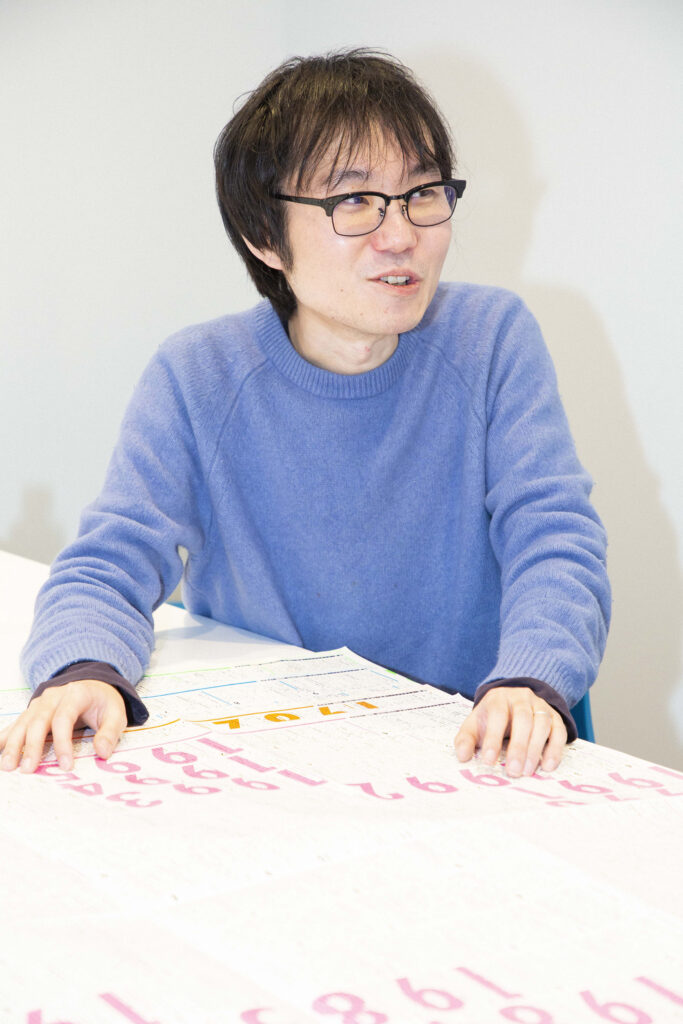
Panth (TVOD) 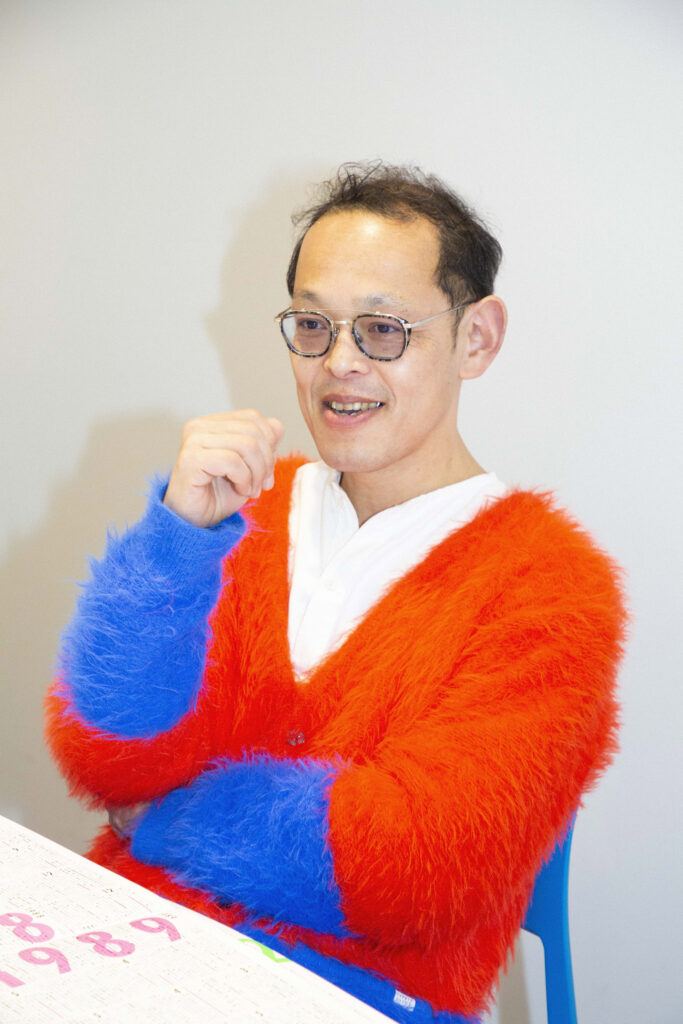
Shuichi Kitao (Million Years Bookstore)
――Wow, just the surface. Indeed, if I look at A Chronological Table (Unabridged edition), which contains a massive amount of information, I can’t help but think that description is reasonable. As a document of contemporary history, I think it’s a very valuable and significant, albeit laborious work.
Kitao: A Chronological Table (Unabridged edition) is a historical overview of subcultures, from their sudden rise to their decline. I think it’ll remain as a historical document even 100 years from now. As the economy prospered and Japan as a whole became wealthier, many young people moved to Tokyo and entered universities. With the overall economy and society in good shape, subcultures, as well as the magazine culture that served as the soil for subcultures, blossomed before eventually declining. This is the kind of story that emerges when you follow A Chronological Table (Unabridged edition). I think it’s a truly amazing work that wouldn’t have been possible without Panth.
Panth: Thank you. I think there are a lot of things that people who grew up in the 70s and 80s might want to say about it. Like, “You didn’t include that person” or “Actually, this happened at that time.” But I hope they enjoy the unpredictability of the discrepancies. Anyway, the creation of A Chronological Table (Unabridged edition) has been my life’s work for a long time, something I was making without any intention of showing it to anyone. So, I never thought that the day would come when I would present it like this. If I hadn’t met Mr. Kitao, I think it would have just been left in my spreadsheet. (laughs)
――It’s surprising to hear that you were creating A Chronological Table (Unabridged edition)as your life’s work. When did you first become interested in creating chronological tables?
Panth: Around the time I was in middle school, I started jotting down historical events that caught my eye in books or on TV in my college notebook. I’d bring that notebook to school and read it alone while grinning. (laughs) I continued to do that for a while, but from about 10 years ago, I started actively making note of even the more detailed bits. Making chronological tables is really an everyday thing for me, and A Chronological Table (Unabridged edition) is the result of that accumulation. Writing about the relationship between subcultures and society is at the center of my current work. But first and foremost, I just love history and the act of organizing it into a chronological table.
Kitao: This tends to be misunderstood, when it comes to subculture and chronological tables, the latter is a much higher priority for Panth. It’s just that subculture is one of the components of a chronological table, rather than the other way around. He’s like “Panth the chronology monster.” (laughs)
The close link between subcultures and society has always been intact
――I think the most distinguishing characteristic of A Chronological Table (Unabridged edition) is that it crosses and compares the subcultural areas of music, film, and animation with the topics of politics, economics, and social customs. What were the intentions behind that?
Panth: I’m just stating the obvious, but subcultures have never existed separately from society. It’s sometimes vaguely said that people in the subculture realm stopped being interested in politics in the 1980s, but I think that’s completely false. In fact, if you open up a copy of Takarajima from that time, you’ll find articles opposing nuclear power and featuring opinions on the general election. If you look at A Chronological Table (Unabridged edition), that fact becomes clearer. For example, the anti-nuclear power demonstrations were very active around 1988, and the Blue Hearts single, “Chernobyl,” was actually released the day after the “10,000 People’s Action,” which was the largest protest. About 20,000 people gathered for this demonstration, so something as large scale as the anti-nuclear demonstrations that started in 2011 was actually taking place right in the midst of the bubble economy. Many people have forgotten about these things, so I want them to remember.
Kitao: As Panth mentioned, even if I think back to the ‘80s when I was just a listener and reader, it wasn’t at all unusual for musicians to make political statements in magazines.
Panth: Also, this might be obvious as well, but a subculture’s power of imagination is defined by society. Until the ‘80s, the fear of foreign enemies and nuclear warfare amid the Cold War were front of mind. However, with the end of the Cold War, people’s imaginations were redirected to think the enemy was within the country. Take the American drama series, The X-Files (1993-2002), for example, where the government is actually in cahoots with the aliens. I feel like that’s directly connected to the current rise of conspiracy theories.
Kitao: This is something I’ve experienced myself, but with A Chronological Table (Unabridged edition), I’m able to enjoy old works even more. If you think analytically, like, “When this book was published, these things were happening, and that’s why things are portrayed like this,” you’ll be able to understand the work on an even deeper level. Even just knowing about the books that were published and the movies that were released at that time will allow you to gain a new perspective.
――Indeed, A Chronological Table (Unabridged edition)could be very useful as a kind of guidebook. Going back to the topic of subcultures and society, I think that you were actually reporting on various cultures from a broad perspective back when you were at Quick Japan. Could you tell me more about that time?
Kitao: Well, to begin with, I already hated the term “culture magazine” from around that time. (laughs) I’ve never used the phrase “culture magazine” before, and plus, I hate how the word “culture” is used in Japanese. There’s a quote from a certain movie that’s popular these days, isn’t there? Like, “Which do you choose, culture or work?” I think the word “culture” can have the nuance of “amusement for those who can afford it.” Like culture classes, for example. However, the musicians and manga artists I liked were creating all their works with a more serious mindset. For Quick Japan, I created each issue with the thought that I wanted to witness the scene without lowering the level of passion. Whether we were successful or not, we called ourselves a “news magazine” rather than a “culture magazine” back then.
――So you were reporting on the news that was happening within society, rather than reporting on “culture” as an amusement that was detached from society.
Kitao: Right. So it makes sense to me that music and manga are treated similarly to politics and economics in A Chronological Table (Unabridged edition). And more than anything, having lived through the end of the subculture era——having been raised by it, and having made a career out of it——I felt it was my job to preserve the history of this era, as a sort of personal debt. So I’m really glad that I met Panth and Komeka and was able to publish Post-Subculture Yakeatoha and A Chronology (Unabridged Edition) through Million Years Bookstore. Actually, the book is designed by OCTAVE, who used to work for Quick Japan when I was the editor-in-chief, so that also means a lot to me.
Are we entering a “no culture” era?
――A Chronological Table (Unabridged edition) ends in 2020. What do you think is in store for our future?
Panth: Recently, I’ve been making a chronological table of the beginning of the Meiji era [1868-1912], which one could say was an era of “no culture.” With the Meiji era’s “Bunmei Kaika” [civilization and enlightenment], there were a lot of traditional things that incorporated a bit of Western culture. During this time, the culture of our country was in decline. When I look at Japan’s record charts today, I feel like it’s starting to look similar to back then. Also, in those days, it was only possible for people who were highly motivated to climb the ladder to survive. If you fell behind, you’d lose your job and be forced to live a difficult life. And throughout Tokyo, poverty businesses like futon-rental businesses were popular. Some points are similar to Japanese society today. So considering that, I think it’s totally possible that Japan will enter that kind of “no culture” era in the future. Kitao, would you be upset if we entered that kind of era?
Kitao: If that happened, I’d have no choice but to make it work in a “no culture” environment. I don’t think I’d mind that at all. In the first place, no one was forming rock bands 50 years before 1968. If you think of it within the context of a 50-year span, the culture and entertainment you’re familiar with now may disappear someday. But there’s nothing you can do about it, or rather, there’s the inevitability of its disappearance, so it’s just something that’s bound to disappear. But ultimately, as long as humans exist, something interesting is bound to be born again. I don’t feel pessimistic about that at all.
Panth: That’s true. You’ve always edited magazines and books with a focus on the city. If there are cities and people in them, I think there’ll always be new things born in the future. It’ll just be something different from the culture that we know. When I look at TikTok, I don’t understand what’s so fun about the dance itself, but there’s also a movement where high school students are competing to see how uniquely they can express themselves, which is very interesting. However, many of those things are live streams and aren’t recorded, which is a bit inconvenient for this “chronology monster.” (laughs)
――The end of one period is the start of another, right? Lastly, could you tell me about anything you have in the works or are thinking about at the moment?
Panth: When I’m working as a critic, I tend to talk about topics that focus on Japan, but the biggest theme for me is rethinking Japan in the context of the world. Looking at the world, far-right forces are rapidly advancing in many countries. Although the liberals who oppose the far-right are holding demonstrations, they’re unable to actually come to a clear conclusion on what kind of society they should create next, and the situation continues to be unstable. I’d like to think about how to position Japan in this chaotic state of the world and what will happen going forward. What’s happening in neighboring Asian countries is also interesting, so I’d like to include that in my writing. Of course, I’d also like to expand the fields and time axis to create a new chronological table. Actually, I have a separate version of the timeline in my spreadsheets that starts in 1984, before A Chronology (Unabridged Edition). Immanuel Wallerstein, an American historian, said that what happened in both 1848, and 1968, which is when A Chronology (Unabridged Edition) starts,triggered revolutions in the world system. In 1848, there was a revolution that sparked nationalism, and in 1968, there was a revolution that sparked post-modernism. By retracing history from the perspective of the former, I think it paints a clearer picture of our present day, which is why I continue to compile chronologies. As a side note, Seiko Ito wrote candid lyrics about what these revolutions brought about in “MESS/AGE” (1989). It’s a masterpiece, so I hope many people listen to it.
Kitao: What I think about is basically all reflected in what my company publishes, so I’d love if you kept an eye on the books we put out going forward. As for the two members of TVOD, both Panth and Komeka are currently getting more attention for their solo work, so I hope they’ll each get even bigger, and then we can publish their next major publication after Post Subculture Yakeatoha. This is how I picture it: After performing on various stages as solo artists, the two of them will team up for the first time in a long time. They’ll leave behind a legendary album, and the label will receive many demo tapes from young TVOD followers. (laughs)
Panth: I’ll do my best to make sure that it doesn’t turn out to be a chaotic and strange final album. (laughs)
*
Shuichi Kitao
Shuichi Kitao is an editor and founder of Million Years Bookstore. In 1993, he began working at Ohta Publishing. He worked as the editor-in-chief of Quick Japan from issue 23 to 50, and in 2006, he launched the literary magazine, hon-nin. In 2017, he went independent and started the publisher Million Years Bookstore. Million Years Bookstore has published books such as Buddha Bowl no Hon (Mariko Maeda), Aijou Kansatsu (Yoshikazu Aizawa), Yorukuma Shukka (Emily Mergot Jacobsen), and Post-Subculture Yakeatoha.
Twitter:@kitaoshu1
Million Years Bookstore: http://millionyearsbookstore.com/
Panth
Panth is a writer and critic. He is part of the text unit, TVOD. As a member of TVOD, he co-wrote the book Post-Subculture Yakeatoha. His main subject of interest recently is modern history and pop culture in East Asia with a focus on Korea. He also likes to DJ.
Twitter:@panparth
Photography Kentaro Oshio
Transration Aya Apton

